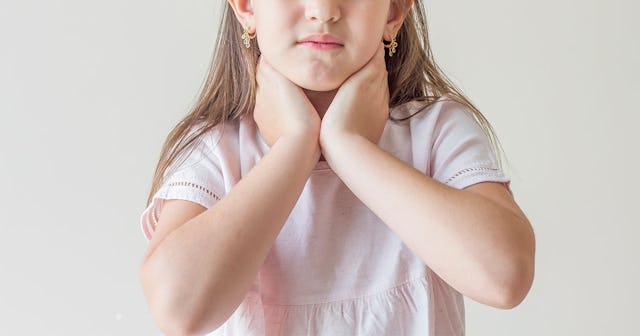What Parents Need To Know About The 'Blackout Challenge'

Our entire society is centered around social media; the person who does not have an Instagram page or Facebook page is a unicorn. And we now have a generation of kids whose lives depend on the internet to function — but in some cases, kids cease to function because of the internet. From kids dying by suicide after being cyber-bullied, to kids who retaliate against someone because of something that happened on the internet, to things like the “Blackout Challenge.”
The challenge became popular in the mid-nineties. Between 1995 and 2007, a report in 2008 by the CDC explains, 82 deaths were linked to another challenge with the same goal as the Blackout Challenge: inviting kids to choke themselves.
The Blackout Challenge, also called the “Passout Challenge,” “The Game of Choking,” “Speed Dreaming,” and the “Fainting Game,” is deadly. Kids who partake in this challenge are dared on TikTok to choke themselves until they are unconscious. What happened to good ol’ Truth or Dare or Spin the Bottle; why can’t those games make a resurgence?
In Italy this past February, a 10-year-old little girl died after accepting the dare. The Italian authorities suspended the TikTok accounts of users who did not verify their age. Suspending the users’ accounts was a step in the right direction, but it did not stop the challenge from spreading.
Joshua Haileyesus was a 12-year-old boy who had a twin brother. It was his brother who found his body lying on the bathroom floor on March 22, 2021 after Joshua attempted to do the Blackout Challenge. Joshua died 19 days after his brother tried to resuscitate him and was taken off of life support; their parents set up a GoFundMe page.
The pandemic has caused a particular reliance on social media in order for kids to maintain their social relationships. There is the ever-so-ancient telephone they could pick up and call their friends, but from what my teen tells me, “No one does that.”
In 2018, the Pew Research Center surveyed 750 teenagers ranging in age 13 to 17-years old and found that 97% of the time, teenagers are on some social media platform like YouTube, Facebook, Instagram and Snapchat. We already know that teenagers are inherently risk takers; they enjoy the thrill of the moment, and they can be impulsive.
In an article written by Sherri Gordon on Very Well Family, she states, “Not only are teens’ developing brains vulnerable to so much time online, but because they often have difficulty self-regulating their screen time, their risks can increase. Additionally, they are more susceptible to peer pressure, cyberbullying and sexting—all activities involving digital communication—making navigating the online social world treacherous at times.”
The Blackout Challenge is an increased risk-taking activity, and it’s made a comeback in the social lives of our teens — sometimes, at a heavy cost.
As parents, we have a responsibility to know what our kids are doing in order to keep them safe. And it’s been added to our job description to be the social media police, not only to monitor their activities, but possibly to save their lives.
There are five simple ways we, as parents, can give our kids some added protection while they surf the internet and while on their beloved social media platforms:
1. Check in with kids and set time limits while they are on the internet.
2. Have your kids’ passwords and handles for every social media account so that even on your lunch break from work, you can check their social media accounts.
3. Have a discussion with your kids about what is happening online; which group conversations they are in; discuss the memes they are laughing at and why; know who they are chatting with and whether they know them in real life.
4. Encourage that your teen meet up IRL with their friends, outside of the internet.
5. Remember that you have the ability and authority to take away the privilege of having social media.
Having the entire internet at our kids’ fingertips is a blessing and also a curse. Impressionable brains, plus tween and teen impulsivity, plus hundreds of thousands of ideas and opinions a click away can be a recipe for disaster. We need an approach that works for our child, our family, and our own mental health as well.
This article was originally published on